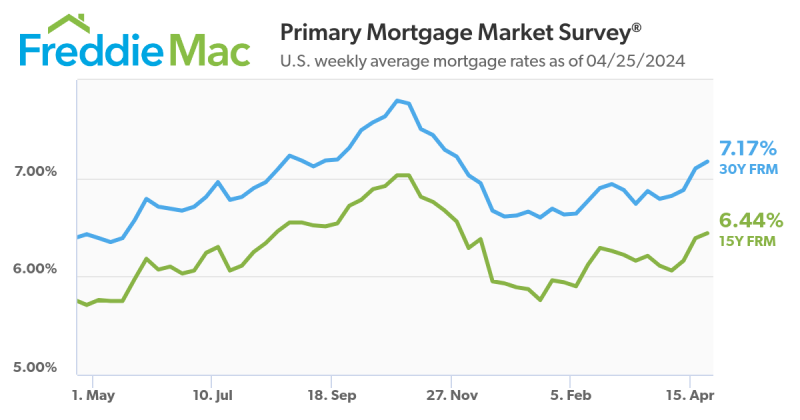Top Mortgage Executives Sound Off on the State of the Industry

This is the 12th time since 2008 that the Mortgage Bankers Association (MBA) Conference Survey Report & Scorecard survey of senior mortgage banking executives has been conducted and distributed. It is completed twice annually, at the MBA’s National Secondary Market Conference in May and at the MBA’s Annual Convention in October.
The purpose of the survey is to capture some basic data and gather the opinions, attitudes, values and expectations of senior executives on many of the key issues, topics and concerns discussed and debated across and throughout the mortgage industry. The survey is funded by Tom Millon, chief executive officer of the Capital Markets Cooperative. The author serves as a money market economist for the Cooperative on a consulting basis.
For this year’s Secondary marketing Conference, I arranged 26 meetings and completed 26 surveys. The surveyed group consisted of five mortgage company presidents, six executive vice presidents, 10 senior vice presidents and five vice presidents. Exclusive of the presidents, all of those surveyed work in capital markets, operations or production. Fifteen of those surveyed are with top 50 firms (ranked by 2013 origination volume), nine are with firms in the top 20, and three are with firms ranked within the top five. The remaining 11 executives are with firms ranging from $400 million to $5 billion based on 2013 production volume. The execs represent 12 banks, 10 independent mortgage companies, two homebuilder-owned firms, and one each credit union, thrift and realtor-owned firm. One of the firms is Internet-based. Eleven of the firms originate only through retail, while the other 15 produces in at least two channels. Six of the 25 separate firms originate in retail, correspondent and broker wholesale. It is a representative group and was structured to be so.
The 75-question questionnaire was drafted several weeks before the Secondary Marketing Conference, beta tested, and run past several industry executives for comprehensiveness and clarity. Except for the beta test group, all surveys were completed face-to-face during meetings at the Conference. About 45 minutes is reserved for each survey. The project’s objective is to record the responses to the questions, compile the information, prepare a report of the results, and distribute it to those surveyed and other interested parties.
By design, the survey group consists almost solely of industry friends and business associates. All are industry veterans. Almost all have been part of this survey since its beginning. Some are polled at this Conference and also at the Annual Convention in October. Most of those surveyed are close industry contacts who have helped keep me apprised of intra-industry trends and developments over the course of years. Most have been colleagues for decades. Only three of those surveyed were polled for the first time.
Given who is being polled, no thought was ever given to even suggest that the survey findings reflect the attitudes or opinions of a broad cross-section of the U.S. population. To the contrary, since it wasn’t a random survey, there is nothing scientific about the results that would necessarily apply outside the mortgage banking industry and at a specific point in time. That being said, I believe the findings well represent the ideas, attitudes and expectations of the broader industry.
Although some of the questions are time-specific and appear on these surveys only once or twice, many others are included in each and every survey. This polling process provides a set of responses over time. An analysis of this longitudinal data shows patterns and trends along with new developments in the business and industry. For example, the reduced demand by the government-sponsored enterprises (GSEs) for the repurchase of loans is reflected in the vast improvement noted in this survey and the last, as compared to the findings of the surveys in 2010 through the first half of 2013.
Past survey results have been the basis for several recent articles in trade publications. The objective of these articles is to bring senior execs into the public discussion of key issues and topics without drama, and despite the often-controversial nature of the underlying subjects.
This report’s author finds the information collected to be relevant, interesting, insightful, informative and instructive for policymakers at a most challenging time for the Congress, the Federal Reserve, industry regulators, the GSEs and the Obama Administration.
With that preface, it’s off to the questions, with the understanding that what follows is intended as only a skin-deep review of the responses, not an analysis of them.
►Question #1 asked those surveyed what the interest rate on the 30-year fixed-rate mortgage would be at year’s end. The group average weighted in at 4.75 percent. The range of expectations was from 3.875 percent to 5.5 percent, but most responses were clustered close to today’s rate level.
►Question #2 wanted to know how much residential origination volume they expected this year. The group average, which is not weighted by volume in any of the answers cited herein, is $1.1 trillion. The response range was from $850 billion to $1.4 trillion.
►Question #3 asked how much their firm’s production was down year-to-date, compared to the same period last year. The response range was from no decline to down 80 percent, with the average down 37 percent.
►Question #4 wanted to know whether their firm’s volume in 2014 would be up, down or sideways. Of the 25 answering the question, 18 said down, two said up, and five expect no change from last year.
►Since the new qualified mortgage/ability-to repay (QM/ATR) regulations now rule, those surveyed were asked in Question #5 what portion of their walk-in business was non-QM eligible. All of the responses were single-digit numbers, many were under two percent and the average was four percent.
►Question #6 wondered how much refinance business they were now doing. On average, about half of the group’s production was refinanced loans. The range was from 15 percent to 60 percent, exclusive of the homebuilder and realtor-owned firms.
►Question #7 inquired about the firm’s FHA volume and whether it had withered since 2013’s Conference. Yes it had, reported 22 of the 25 respondents.
►What portion of the firm’s convention production was of loans with LTVs exceeding 80 percent was the subject of Question #8. The answer was precisely one-third, with a response range of five percent to 70 percent.
►Question #9 asked how much of their firm’s activity involved jumbo and adjustable-rate mortgage (ARM) products. The range was from zero to 40 percent, with an average of 13 percent.
►Is your firm putting ARMs and jumbo into portfolio, asked Question #10? The response was that eight were doing so while 17 were not.
►Question #11 wanted to know if their firms were doing more, less or the same amount of high-DTI lending this year as last. Four of those surveyed were doing more, while 10 were doing less and 12 reported no change.
►Were their firms doing more low-FICO lending this year, asked Question #12, or was it less or the same as last year? Here, 10 were doing more, four were doing less and 12 recognized no meaningful change year-over-year.
►Question #13 wanted to know if their FHA market share would increase, decrease or remain the same in 2014. Eleven of 24 said it would decrease, eight expect their FHA share to be flat and five expect it to increase.
►Question #14, which is set against a backdrop of efforts to expand the FHA credit box, questioned whether doing so is a good idea. No, said 18, versus eight who felt otherwise.
►Question #15 inquired as to whether the respondents thought that market participants would go along with any loosening of credit standards. Yes they would go along with loosening reported 18 execs, compared to eight who disagreed.
►Recently, Carrington Mortgage announced that it was writing FHAs to a 550 FICO score. Question #16 wondered how many execs saw this as a financially sound idea. One respondent did, but 25 others disagreed.
►Questions #17 and #18 dealt with Basel III and the new international capital framework that is coming. By a count of 17 to nine, respondents thought that its enactment wouldn’t adversely affect their firms’ mortgage strategies in the next five years, and by a 15 to 10 count didn’t think that Basel would limit their options for selling servicing.
►Are appraised values still a major concern, asked Question #19? They aren’t a major concern replied 18 of 26.
►Questions #20 and #21 asked about house prices, specifically if they’d increase again this year, and by how much. The response range was from two percent to 12 percent, with a group average of up five percent in 2014.
►Question #22 asked by how much each expected the mortgage industry to shrink in size, both in numbers of operating firms and in the size of the workforce. The average was 14 percent smaller, but only three respondents thought the shrinkage would be under 10 percent.
►With the government prodding and the mortgage insurance (MI) industry well capitalized and aggressive, Question #23 wanted to know if the execs planned to do more or less high-LTV lending this year. They will do more, said 12 execs, compared to one whose firm will be doing less. However, the majority, 13, will originate more or less the same amount this year as last.
►The mortgage insurance companies have all introduced new Master Policies. Question #24 asked if they were an improvement. In one of the very few queries to capture a unanimous vote, 23 of the 23 who felt they could answer the question said, yes, they’re an improvement.
►After being devastated in the financial crisis, mortgage brokers have made a modest comeback over the past two years. Will they grow their market share over the next several years, asked Question #25? In the survey’s only tie, 13 respondents took each side of the question.
►Questions #26 and #27 inquired about profitability at their firms. Of the 24 who responded, only one indicated that profits were higher this year than last. And by how much were they down? They are off by an average of 7.4 on the less-to-more scale of 1-10. The range was from 4-9 on the 10-point scale.
►Questions #28 through #31 wanted to know about mortgage servicing rights (MSRs): Retaining versus selling them; who was buying them; whether current MSR prices were attractive; and at what multiples they found selling and or buying them attractive. First, servicing will be retained by 13, sold by seven, and another four will be both buyers and sellers of MSRs this year. Eleven respondents are currently purchasing MSRs, but 14 others aren’t. Concerning prices, 19 of 23 said that current prices are attractive. Multiples of at least 3.5-times the servicing fee is the bottom end of the attractive range, according to those surveyed.
►Question #32 asked if the execs’ firms were doing more mandatory business this year than last. Yes said 15, while seven said no and four others reported no change in their mandatory business.
►Questions #33 and #34 addressed agency buyback demands, how they’ve changed since last October’s MBA Annual Convention, and how large a problem this issue is today. Sixteen execs said that repurchase demands were down, compared to four who reported an increase, and five who acknowledge no change. As to how large a problem it is, the average score was 3.2 on a 10-point scale. The range of answers was one through nine. To those who have not reviewed one of these reports before, this is the lowest ever recorded and compares to average scores of eight plus in recent years.
►Are consumer attitudes toward homeownership different today than before 2008, asked Question #35? They‘re absolutely different today, said 25 of the 26 respondents answering the query.
►Question #36 wondered if the execs felt that efforts to modify loans have in any way hurt the mortgage market. Fourteen replied that those efforts haven’t hurt the market, but 11 others saw it differently.
►Question #37 wanted to know if the underwriting and documentation requirements of the GSEs were too stringent. Underwriting isn’t too tight said 15, but 11 others said they were too tight.
►As for overly strict doc requirements, Question #38 showed 18 of the 25 respondents agreed they were too tough on mortgagors.
►The same question was asked about underwriting standards at the FHA in Question #39. Here, 18 of those surveyed indicated they weren’t too tight, compared to eight who disagreed.
►Question #40 asked it the GSEs’ loan limits should gradually be rolled back. No reported 17 compared to seven who thought they should be lowered.
++Question #41 wanted to know how one-sided their dealings were with Fannie Mae. On the 1-10 scale, the group’s average was a 7.3. Twenty gave it a six or higher, compared to one who ranked it below a five.
►The Johnson-Crapo Bill on housing finance reform was the subject of Questions #42 and #43. Respondents were queried about its passage either this year or next. In a second unanimous vote, those surveyed said not in 2014, and only two of 23 thought passage more likely in 2015.
►At what level of production capacity is your firm operating, Question #44 inquired? The range of answers was from 60-100 percent, with an average operating capacity of 79 percent. Only three said they were operating at 100 percent, compared to nine who reported a rate under 80 percent.
►Question #45 asked if the firms dealt with one or another mortgage cooperative. Sixteen execs provided an affirmative compared to 10 who did not belong to one or another. Private securitizations are off to a slow start this year.
►Question #46 wondered if they thought the pace would pick up in the months ahead. Activity will increase said 15, while 10 others remain skeptical of an acceleration of private issuance.
►In Question #47, respondents were asked if they thought an expansion of the Home Affordable Refinance Program (HARP) would provide economic and societal benefits. No said 14, but the vote was close, as another 11 thought such an initiative would be beneficial.
►Compliance was the focus of Questions #48 though #51. Since enactment of the Dodd-Frank Act, those surveyed said that compliance costs have increased by an average of 250 percent. The range was from 25 percent to 350 percent. They added that, on average, compliance now consumes 21 percent of operating costs; compliance has increased origination expenses to the borrower by 35 percent; and in dollar terms, compliance has added an average of $939 to the cost of a mortgage loan.
►Questions #52 through #53 wanted to know if those polled thought the recovery in housing was losing momentum, and if yes, how much forward momentum was the market faltering. Yes said 21 respondents to a loss of steam, while four others begged to differ. As for how much, the question racked up a 5.1 on the one to 10 point scale. The range of responses was from two to seven.
►Questions #54 through #63 inquired about regulators and regulations. More specifically, Question 54 asked if it was possible to comply with disparate impact rules and not originate too many weak and risky loans. No we cannot, replied 16 of those surveyed, as another nine stated that you could “if you were prudent.”
►Question #55 asked if the CFPB has brought clarity to the loan originator compensation issue. No it hasn’t, said 18 execs, compared to six who thought it had brought clarity to the issue.
►As for the qualified mortgage (QM) issue, 16 of 26 respondents indicated in Question #56 that clarity has been provided on the QM issue.
►Question #57 wondered how big a change the new RESPA/TILA integrated disclosures are for the industry. On the 10-point scale, the average response elicited a 7.6. Twelve execs ranked it an eight or better on the one through 10 scale.
►Questions #58 and #59 asked how difficult and how expensive it was to implement QM. The group’s averages were 7.1 and 7.3 respectively on the scale of one to 10. Eighteen ranked the difficulty a seven or higher, while 15 ranked the implementation cost at seven or better.
►Has QM tightened credit, asked Question #60, and by how much asked Question #61. It has tightened access to credit said 18 of 25 of those surveyed. As for how much it has tightened, the average was a 5.8 on a 10-point scale. Seven ranked the tightness at five or less.
►Question #62 inquired about the appetites their firms had for non-QM lending. The average response was a three out of 10, and 15 respondents gave it a three or less.
►Question #63 asked, if the outcome was determined on the basis of a cost-benefit analysis, did the execs think that consumers benefited from the advent of the CFPB. Only one respondent in 25 felt consumers benefited from the new regulator when costs were measured against benefits.
►Question #64 wondered if the execs thought that housing affordability was waning. Indeed it is, as 20 said it was while only five said not.
►Should the world of pre-2008 lending be restored, Question #65 asked? One of 24 responses called for such a restoration.
►Question #66 asked the executives to assess Federal Housing Finance Agency (FHFA) Director Mel Watt’s first four months in office. Exclusively on the strength of his presentation a week prior to conducting this survey, he earned a 5.4 on the 10-point scale.
►Questions #67 through #69 wanted to know about the execs and GSE reform, specifically how much attention were they personally were paying to the topic and if they expected a broad business restructuring in the next one year and five year timeframes. The group average was 7.2 on the issue of personal monitoring of the debate and proposed legislation. A dozen respondents score the question an eight or more. As for when, certainly not in the next year said 25, but in the longer period, 22 of 26 expect a restructuring of the mortgage industry and business.
►Question #70 wondered about how attractive respondents thought the mortgage banking business would be in the years immediately ahead. The answer to the question garnered a 6.3 of 10, with seven ranking it an eight or better versus three who graded the answer a three or less.
►How would they grade Fannie Mae and Freddie Mac on their performances the past year was the goal of Questions #71 and #72. Both earned Cs. And, is your firm losing business to Fannie Mae, asked Question #73? Sixteen indicated they were not, compared to nine who indicated they were.
►Question #74 wondered if the execs were familiar with the term “demographic cliff.” More than half the execs recognized the term to mean the drop in the size of the post-boomer population.
►And finally, Question #75 inquired about the fall election and which party would have control of the Senate after November. By better than two to one, the Republicans are expected to win the Senate.
In summary, 75 questions and answers from some of the most important voices in the industry. For now, that’s the most current take on a series of wide-ranging issues affecting housing and mortgage finance from a fairly representative cross-section of industry executives. I want to again thank all of those who participated in this survey. Their time, wisdom and candor are much appreciated.
Tom LaMalfa is a 34-year veteran mortgage-market analyst and researcher. He has done pioneering work in the areas of secondary markets, wholesale mortgage banking, mortgage brokerages, financial benchmarking and GSE reform. Tom continues since 1977 to co-author an old-fashioned mail newsletter, The Holm Mortgage Finance Report. In the aftermath of the financial crisis, his focus is on Washington, D.C. and the regulatory burden it is imposing on consumers and lenders. His 21-year old research firm, TSl Consulting, does survey research. He may be reached by e-mail at [email protected].
This article orignally appeared in the July 2014 edition of National Mortgage Professional Magazine.




